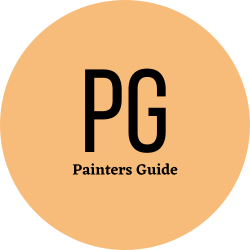What is Stucco
by siteadmin

What is Stucco?
The traditional process of stucco uses a lath made up of asphalt-infused papers, metal wires and plaster stops. Then, over the lath are applied a brown coating, a finish layer and a scratchcoat. These layers can be textured or troweled flat.
Before installing stucco a contractor examines the structure of your home to ensure that it is resistant to moisture damage. They will also inspect doors, roofs and windows for leaks.
It is used as a building material
Stucco has many advantages over exterior finishes. It is also water-resistant and insulation, which keeps homes cool in the summer and warm during the winter. It also blocks the transmission of sound, making it ideal for houses in areas with heavy traffic and noise.
Traditional stucco consists of a mixture Portland cement and fine sand. This is usually applied three times to a lath base. It is tinted with earth tones, and can either be painted or allowed the weathering process to take its course. It is also insect-resistant and flame-resistant.
Stucco, which was once confined to Southwest America, is now becoming more popular throughout the United States. It is now used throughout the United States in various architectural styles, including modern and current. Stucco is a versatile and durable building material. It can be used for the facades to add a touch of intrigue. It also protects the wall from natural elements, like rain, wind and snow.
It's easy to colour
Stucco, a versatile and easily-colored building material, is easy to color. It is available in many different textures, and can also be tinted to match other architectural elements of a home such as the windows, doors, or shingles. Tinting stucco is the same as adding color to paint. Choose a color that can withstand sun and weather elements.
Drive around and look at homes to get ideas. Look at color schemes and decide if light or dark tones are your style. Consider whether you prefer subtle contrasts, or dramatic ones.
Before adding any color to stucco check it for major flaws. If there are cracks, patch them with a product such DRYLOK Fast Plug. This will stop moisture and any other issues that may affect the integrity the stucco. Add the desired colors to the stucco and mix thoroughly. Follow the manufacturer's directions.
It is durable
Stucco, a durable building product, will last for a very long time. It is resistant against rot, insects and fungus. This helps to improve the indoor air. It also increases your home's resale. The exterior of your home can be styled with a variety textures and finishes.
It is crucial to hire a professional for the job. They will check the existing structure to see if there are any cracks or breaks. These cracks, although they may seem minor, can allow water infiltration into your home and cause mould and mildew.
The first step of the installation process is to install the weather barrier on the outside wall. Choose a weather-barrier that protects framing from moisture while being permeable enough for water vapor to escape. It should have a minimum thickness of 5/8 inch.
Repairing is simple
Stucco cracks are easy to repair. Cracks can be an aesthetic problem, but also allow moisture in the wall to cause mildew and mould. This can damage your home's structure, so you should have any cracks repaired immediately.
You can repair small hairline scratches in your stucco with exterior latex-paintable caulk. Select a caulk shade that matches or is similar to the color of your stucco. It's better to hire a stucco contractor for large cracks. They'll fix them properly and prevent future problems.
When repairing the stucco, press firmly to the surface of it to see if it's still intact. If you are not sure, use an ax to widen the bottoms of each crack. Then apply bonding solution to help the stucco adhere. You can save money on future repairs by doing this.
https://www.beststuccocompaniesinalbuquerque.com/
What is Stucco? The traditional process of stucco uses a lath made up of asphalt-infused papers, metal wires and plaster stops. Then, over the lath are applied a brown coating, a finish layer and a scratchcoat. These layers can be textured or troweled flat. Before installing stucco a contractor examines the structure of your home…
Recent Posts
- Sophisticated Exterior Painting Methods: Advice for a Perfect Coat
- Lou’s Painting Company Sets New Standard for “Above and Beyond” Painting Services
- Lou’s Painting Company Sets New Standard for “Above and Beyond” Painting Services
- Overland Park KS Painters Provides Insight: Essential Questions to Ask Your House Painter
- Is Stamped Concrete Cheaper than Regular Concrete? Debunking Myths with Columbus Stamp Concrete
